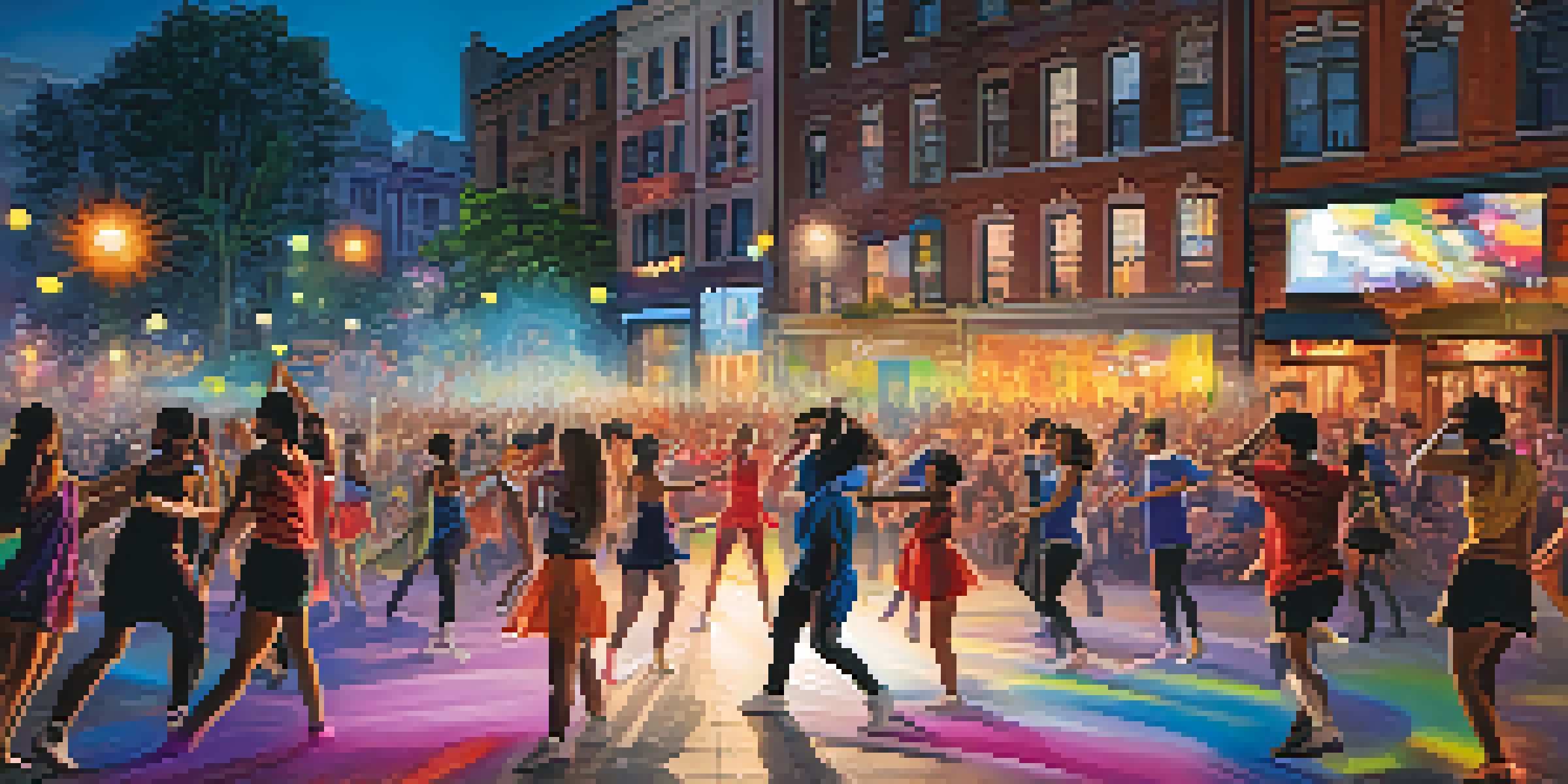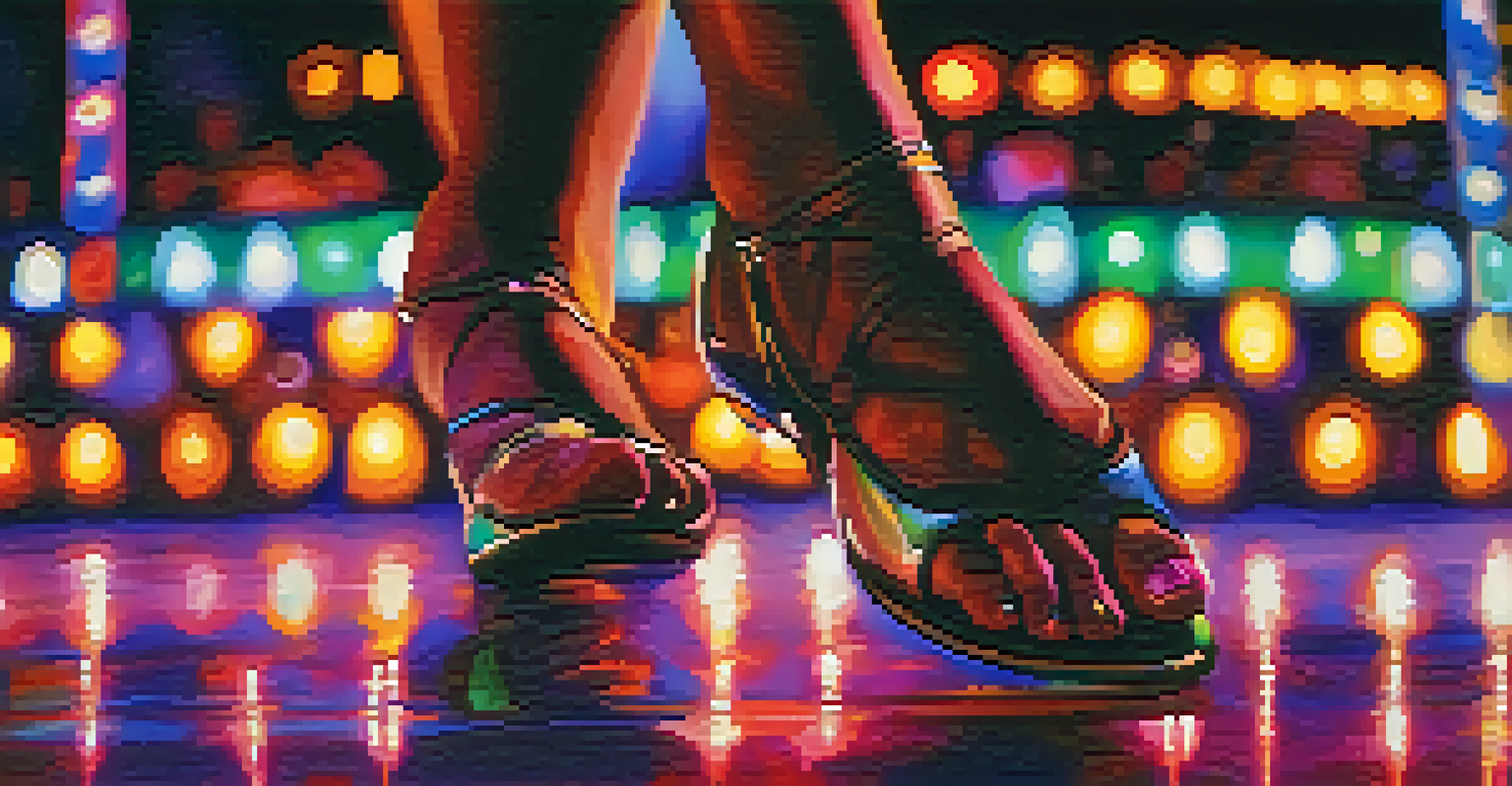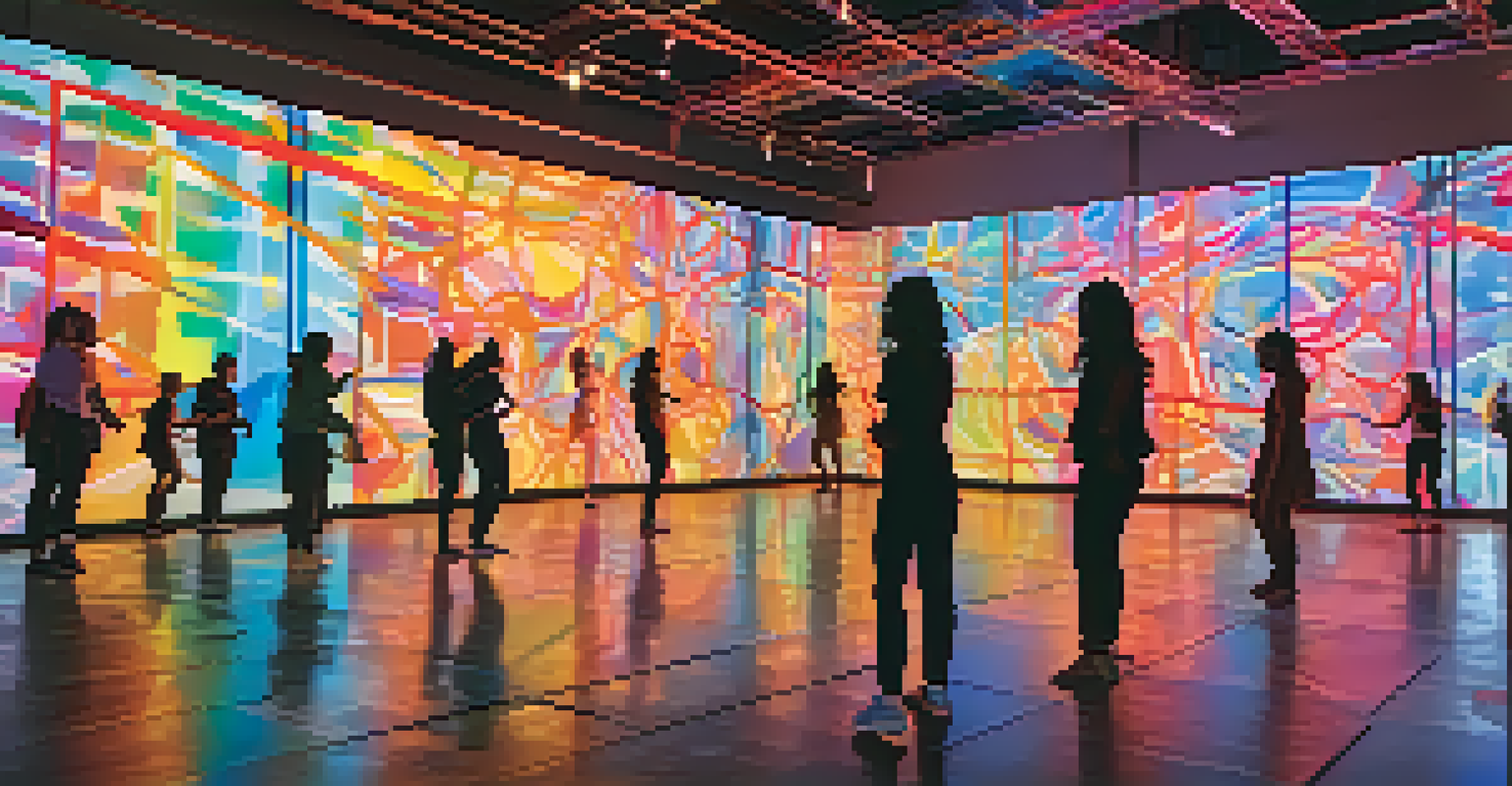Interactive Dance: Blending Audience Participation with Tech

Understanding Interactive Dance and Its Appeal
Interactive dance is a captivating fusion of performance art and audience involvement. It invites spectators not just to watch but to engage actively, turning passive viewing into an immersive experience. This unique blend has gained popularity because it creates a sense of community and shared expression among participants.
Dance is the hidden language of the soul.
Imagine attending a dance performance where your movements can influence the choreography or visuals. This interactivity transforms traditional dance into a dynamic dialogue, making each event unique based on audience contributions. As technology evolves, the possibilities for this engagement continue to expand, drawing in more diverse audiences.
The appeal of interactive dance lies in its ability to break down barriers between performers and spectators. By inviting the audience to participate, it fosters a deeper emotional connection to the art form, encouraging people to express themselves in ways they might not do in a conventional setting.
The Role of Technology in Interactive Dance
Technology plays a crucial role in shaping the landscape of interactive dance. Through tools like motion sensors, augmented reality, and mobile apps, performers can create experiences that respond to audience movements in real-time. This integration of tech not only enhances the visual spectacle but also deepens the engagement.

For example, some performances use body-tracking systems that allow dancers to manipulate digital elements on stage with their movements. This creates a stunning visual interplay between the dancers and the digital world, captivating audiences and inviting them to be part of the creation process. It's a fascinating marriage of art and science that opens new pathways for expression.
Interactive Dance Engages Audiences
Interactive dance transforms traditional performances by inviting audience participation, creating a unique and immersive experience.
Moreover, technology enables creators to gather data on audience interactions, offering insights that can inform future performances. This feedback loop not only helps refine the art but also allows for a more tailored experience, ensuring that each performance resonates with its audience.
Types of Interactive Dance Experiences
Interactive dance comes in many forms, each providing a unique experience for participants. From immersive installations to street performances, the variety ensures that there's something for everyone. These experiences can range from structured events where participants follow cues to completely open formats that encourage spontaneous expression.
Technology is best when it brings people together.
One popular format is the interactive installation, where audiences are invited to move through a space, triggering sound and visuals with their movements. This setup transforms the environment into a living canvas, allowing individuals to leave their mark on the performance. It’s like stepping into a painting where you become part of the artwork.
Another engaging format is the community dance event, where participants of all skill levels are encouraged to join in. These gatherings not only promote movement and creativity but also foster a sense of belonging, often resulting in joy-filled moments that strengthen community bonds.
Benefits of Audience Participation in Dance
Incorporating audience participation in dance offers numerous benefits, both for the performers and the spectators. For the audience, it creates a sense of ownership and investment in the performance. When participants feel they have a role in shaping the outcome, their experience becomes far more memorable and impactful.
For performers, engaging with the audience can provide fresh perspectives and energy that can elevate their work. The spontaneity of audience interactions can inspire dancers to adapt their movements, leading to unexpected and beautiful moments that might not have occurred in a traditional setting. This collaborative spirit enhances creativity and showcases the art form's adaptability.
Technology Enhances Dance Experiences
The integration of technology, such as motion sensors and augmented reality, allows for real-time audience engagement and dynamic performances.
Moreover, such interactions can break down social barriers, encouraging participants to step outside their comfort zones. This aspect is especially important in promoting inclusivity and diversity within the art community, making dance accessible to a broader range of people.
Challenges in Creating Interactive Dance Experiences
While interactive dance offers exciting possibilities, it also presents unique challenges for creators. One significant hurdle is ensuring that technology works seamlessly during performances. Technical glitches can disrupt the experience and potentially alienate audience members, so thorough testing is essential before any show.
Another challenge lies in balancing structure and freedom. While audience participation is vital, too much unpredictability can lead to chaos, detracting from the artistic vision. Finding the right equilibrium between guided choreography and spontaneous expression requires careful planning and creativity from the choreographers.
Finally, engaging diverse audiences can be tricky. Different demographics may have varying levels of comfort with technology and performance participation. Creators must be mindful of these differences and strive to create inclusive experiences that invite everyone to join in, regardless of their background or experience.
Examples of Successful Interactive Dance Projects
Several innovative projects have successfully combined interactive dance and technology, showcasing the potential of this art form. One notable example is 'The Dance of the Machines,' where dancers interacted with robotic elements that responded to their movements, creating a breathtaking visual and kinetic display. This project not only entertained but also sparked conversations about the relationship between humans and technology.
Another inspiring project is 'Dance Your City,' an initiative that encourages people to explore urban spaces through dance. Participants use a mobile app to record their movements, which are then translated into a digital performance that reflects their unique experiences in the city. This project empowers communities to express their stories through movement, fostering a sense of pride and connection.
Audience Participation Boosts Creativity
Engaging the audience fosters a sense of ownership and can inspire performers, leading to unexpected and memorable moments in dance.
Lastly, 'Alive' is an immersive dance experience that invites audiences to wear augmented reality glasses, allowing them to see digital projections that interact with live dancers. This innovative approach blurs the line between reality and the digital world, offering an unforgettable experience that leaves a lasting impression on participants.
The Future of Interactive Dance and Technology
The future of interactive dance looks promising as technology continues to advance. With developments in artificial intelligence and virtual reality, the potential for creating even more immersive and engaging experiences is limitless. Artists are already exploring these technologies, pushing the boundaries of creativity and redefining what dance can be.
Imagine attending a performance where you could enter a fully virtual environment, participating in a dance that transcends physical limitations. This kind of experience is becoming more feasible, providing opportunities for audiences to engage with dance in ways that were once unimaginable. The intersection of technology and creativity is paving the way for revolutionary art forms.

As more artists embrace interactive elements, we can expect to see a broader range of voices and stories represented in dance. This inclusivity will not only enrich the art form but also create a more vibrant and diverse cultural landscape, inviting everyone to be part of this exciting journey.